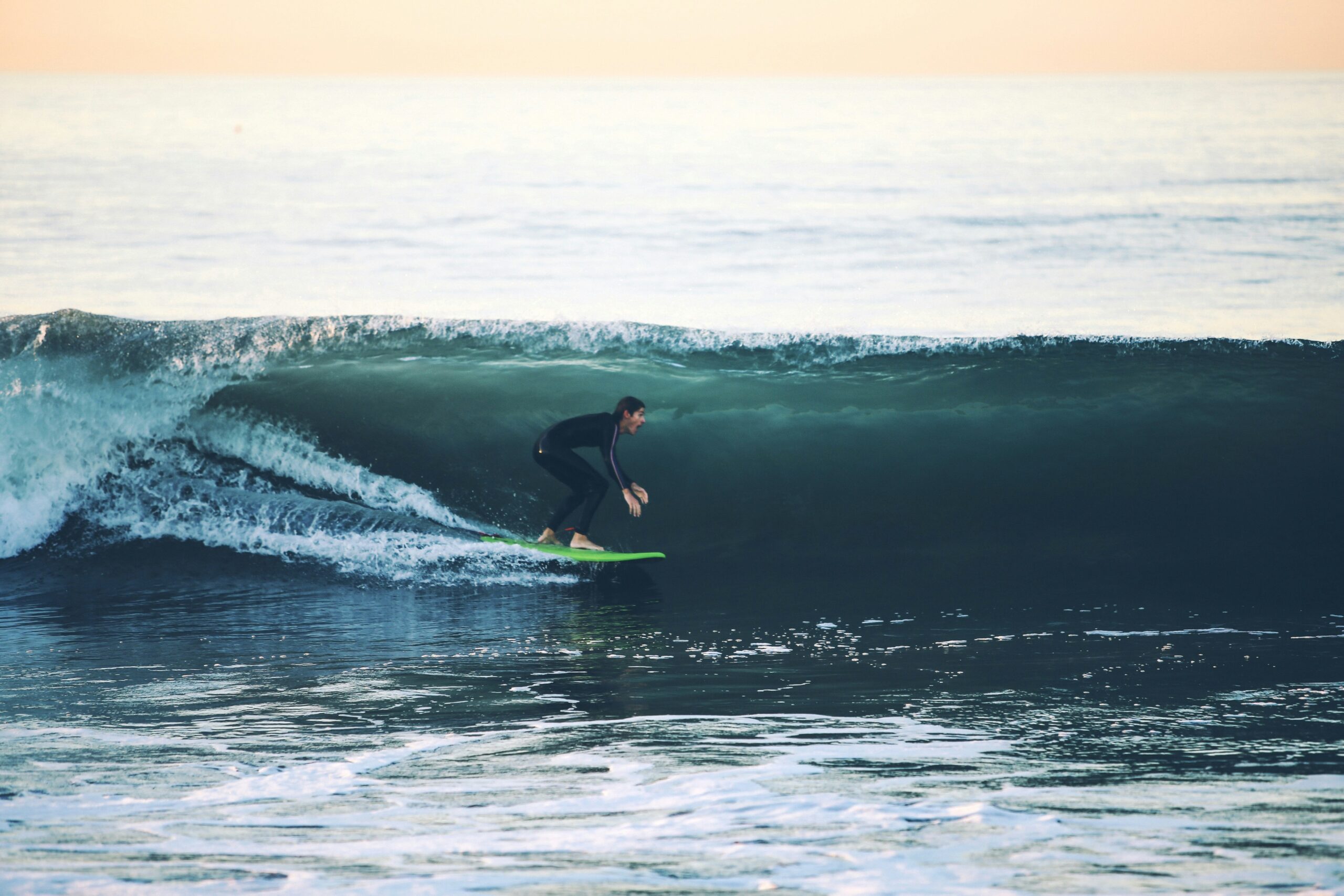
Surfing is an exciting and rewarding sport, but for beginners, catching that first real wave can feel like a huge challenge. It requires patience, practice, and a deep understanding of the ocean’s rhythm. If you’re ready to dive into surfing, this guide will walk you through the essential steps to help you catch your first wave with confidence and style.
Get to Know the Ocean and the Waves
Before you even touch the board, it’s essential to understand the ocean. Waves are formed by wind and the movement of water, and their size and shape depend on several factors, such as wind speed, direction, and the ocean floor. For beginners, it’s best to start with smaller waves that are less powerful and easier to ride.
Learning how waves break is key to positioning yourself correctly. There are different types of breaks, like beach breaks, reef breaks, and point breaks. Beach breaks, where the waves crash directly on the shore, are often the safest and easiest for beginners. Knowing where to paddle out and how to spot the best waves for catching will set you up for success.
Choosing the Right Surfboard for Beginners
The surfboard you use can make a big difference in how quickly you catch your first wave. For beginners, longer and wider boards are typically better because they provide more stability. A longboard or soft-top board is ideal since it allows you to balance more easily and gives you more time to get into the correct position.
Longboards are easier to paddle and offer more surface area, which helps you catch smaller waves. Shortboards, on the other hand, are faster and more maneuverable, but they require more experience to control. As a beginner, opting for a longboard will give you a solid foundation for learning the basics and gaining confidence in the water.
Paddling and Positioning Your Board
Paddling is a fundamental skill every surfer must master, and it’s your ticket to catching waves. Start by lying down on your board, making sure your body is centered. Keep your head up and your eyes on the horizon. Begin paddling by using your arms in alternating strokes, making sure your strokes are long and strong.
Positioning yourself correctly in the water is just as crucial as paddling. You’ll want to be in the “lineup,” the area where waves break, but not too close to the shore. Paddle out to where the waves are forming and wait for the right moment to catch one. As you get into the lineup, keep an eye on the waves and be ready to adjust your position when necessary. Understanding where to sit and how to read the waves will help you catch your first one more easily.
Timing and Paddling for the Wave
Timing is everything when it comes to catching a wave. You need to start paddling at the right moment to match the wave’s speed and lift. As the wave approaches, begin paddling hard and fast to gain momentum. The goal is to paddle in sync with the wave so that it picks up the tail of your board and carries you forward.
It’s essential to maintain your balance and stay focused while paddling for the wave. If you paddle too early, the wave may pass you by. If you paddle too late, the wave may overtake you, and you’ll miss your chance. Practice this timing over and over again, as it’s the key to successfully catching the wave.
Standing Up on the Board
Once you’ve caught the wave, the next step is standing up. This is called the “pop-up,” and it’s an essential skill in surfing. When the wave lifts your board, push up quickly with your hands, and bring your feet underneath you in one smooth motion. The goal is to get your feet in the correct position so that you can balance and ride the wave.
Start by keeping your hands close to the board and springing your legs underneath you. Your knees should be slightly bent to absorb the wave’s motion, and your feet should be shoulder-width apart. Focus on looking ahead and not down at your feet. Balance is key, and the more you practice your pop-up, the more natural it will feel.
Falling and Getting Back on Your Board
Falling is a regular part of learning to surf, and it happens to everyone. When you fall, try to stay calm. It’s essential to protect yourself by keeping your arms close to your body and avoiding contact with your head or the board. Don’t be discouraged by falls—they’re a natural part of the process, and each time you fall, you learn something new.
After falling, quickly get back on your board and paddle back to the lineup. The quicker you return to the water, the more you’ll practice, and the faster you’ll improve. Don’t let falls discourage you; they’re just another opportunity to grow as a surfer. Remember, persistence is key, and with time, you’ll improve your skills.
Catching your first wave is an exciting achievement in your surfing journey. By understanding the ocean, choosing the right board, mastering paddling, and timing your movements, you’ll be well on your way to becoming a confident surfer. Remember, surfing takes practice, and every wave you catch brings you closer to mastering the sport. Most importantly, have fun with the process, and enjoy the beautiful experience of connecting with the ocean!